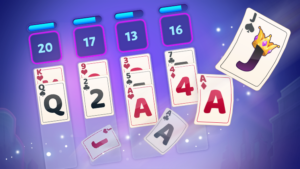How to write a children’s book

Writing a children’s book is an important skill that is not just fun, but also useful. It can help you become more imaginative and creative, and it can also help you learn how to be a better writer. Want to get a children’s book written? You can find an expert book writer for hire at BookSuccess and do it with ease.
First, make sure that you write your book in a way that appeals to children. Children like their books to be exciting and funny, so make sure that yours does just that! you can get it done by a online book writing service as well
Writing a children book
Writing a children’s book is a lot like writing any other kind of book. The key is to make the story as engaging and fun as possible for kids. In order to do this, you’ll want to make sure that every word you use is appropriate for your audience. You’ll also want to make sure that your story has a beginning, middle, and end. This means that you need to know when the plot starts and ends so that readers will be able to tell where they are in time and space.
Here’s how to write it step to step
- Meant for children
First of all, you need to keep in mind that these books are meant for children. Most likely, your audience will be four or five years old and younger. So it’s best not to use words that might scare them too much or get too graphic. Secondly, your story should be easy for kids to understand. That means avoiding long sentences and complicated vocabulary—instead, focus on short sentences and clear explanations so that kids can understand what you’re saying as quickly as possible.
- Don’t forget about the illustrations
You’ll need illustrations for each page of your book so that kids know what’s happening when they turn the page (don’t worry—you’ll have time for those!) And although there’s no exact science behind how illustrations should look (each illustrator is different!), there are some general guidelines that can help you make sure everything looks right together: if an illustration has two people standing close together with heads bowed down toward each other talking quietly while holding hands then it probably needs more than just one illustration.
- Consider what makes a Good Children’s Book
A good children’s book is written in a way that appeals to its target audience. You can do this by using simple language and telling stories that are relevant to the child readership. The book should also be engaging enough that they keep turning pages!
A good children’s book is one that tells a story that is interesting and engaging. It should also have characters who are well-defined and relatable, as well as an appropriate amount of suspense or conflict. The plot should be easy enough for young readers to follow, but not so simple that it becomes boring. In addition, there should also be some sort of moral for the reader at the end of each chapter or section in order to encourage them to continue reading more books by this author in the future!
Once you know who your target audience is, it’s time to figure out what makes a good children’s book. There are many different factors that go into making a good children’s book, but one key component is that it should be entertaining. This means having an interesting plot, characters with depth and personality, and illustrations that make the story come alive on the page.
However, there are some basic criteria that every good children’s book should have:
- It must be interesting enough for children to want to read it, but not so complicated that adults don’t understand what is going on
- It should include illustrations that help tell the story and make things more clear for younger readers who may not fully understand what is being described at times
- Create ideas for children book
You can use your favorite children’s books as inspiration for your own stories, or you can just think of a story that you love and want to tell. It’s important to remember that while the story needs to be funny, it also needs to be engaging.
It could be about a pet, or it could be about an animal who does something you never knew existed until now. The most important thing is to think about what your audience might want to read and how you can fulfill that need.
One of the most important things you can do when you write a children’s book is to think about what kind of book it will be. Do you want to write a picture book? A chapter book? A middle grade novel? A young adult novel? What age group do you want this story to be appropriate for? How long will it be? Do you want it to be funny or serious? Is there a particular message that you want to get across in your story, if so what does that message mean to you?
When you first start writing, you won’t be sure where to begin. There were so many books out there, and they all seemed very different from each other. Even within each genre, there were so many different approaches taken by different authors. So how do you know where to start? Well first off find some examples of books that are similar in genre and style as your own idea. It might help if you could get someone else’s opinion on what they thought about the
- 5. Read books in your genre
This step is so important because it helps you find the best way to tell your story. You can read more than one book in the same genre, or even write down some of the things that you liked about books before. This will help you figure out what kind of tone works best for your stories!
Once you have the idea for your book, it’s time to start reading! There are plenty of great books out there from which to choose, but make sure that you pick ones that fit into what you want to write about and how old your reader will be when they read it.
- Write down all ideas
Once you get through all of the different books on hand, take notes on all of the things that stood out and things that interested you in particular. Write them down so they will stay fresh in your mind while writing your own story!
- Detail your ideas
It is crucial to start by listing all of the details that you want to include in your children’s book. This will help you decide what information needs to be included in each chapter. It also helps if you know how much time you will have to write it and how long it will take.
You can think of it as a mini-book of sorts, with sections like:
- Pitch/title: What is the title of your children’s book? Is it called “The Cat in the Hat,” or “The Big Book of Animals?” Your pitch (or title) should be intriguing and captivating, but not so long that it feels over-wordy. You want to make sure that your readers will remember your title when they think about your book.
- Important Characters: There should also be an introduction for every important character who will appear in your story. This will help the reader understand how these characters relate to each other and how they fit into the story overall.
- Plot: It is important for children’s stories that there be a plot that has some sort of conflict or resolution at the end of each chapter so that readers will want to continue reading more chapters throughout the book until they reach its conclusion or resolution at last! If there isn’t any conflict or resolution then readers may begin to lose interest in continuing reading further chapters further into the book because nothing exciting happens within them so far! So make sure that there is some sort of conflict/resolution occurring within each chapter so that readers will continue reading more pages until they reach their ending point
- Devise a draft
Once you have identified all of the details, it is time to sit down and write out a draft for each chapter. This will help ensure that everything is included in the book, as well as being able to go back and make edits as needed once it has been published online or sold at an event like a fair or library story hour event where children are encouraged to create their own stories about their favorite characters from movies or TV shows they enjoy watching on Netflix or Hulu Plus!
Finally, critique your draft yourself or by someone and edit the necessary changes and there you go! Your children’s book is ready.





